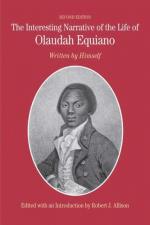We are almost a nation of dancers, musicians, and poets. Thus every great event, such as a triumphant return from battle, or other cause of public rejoicing is celebrated in public dances, which are accompanied with songs and music suited to the occasion. The assembly is separated into four divisions, which dance either apart or in succession, and each with a character peculiar to itself. The first division contains the married men, who in their dances frequently exhibit feats of arms, and the representation of a battle. To these succeed the married women, who dance in the second division. The young men occupy the third; and the maidens the fourth. Each represents some interesting scene of real life, such as a great achievement, domestic employment, a pathetic story, or some rural sport; and as the subject is generally founded on some recent event, it is therefore ever new. This gives our dances a spirit and variety which I have scarcely seen elsewhere[B]. We have many musical instruments, particularly drums of different kinds, a piece of music which resembles a guitar, and another much like a stickado. These last are chiefly used by betrothed virgins, who play on them on all grand festivals.
As our manners are simple, our luxuries are few. The dress of both sexes is nearly the same. It generally consists of a long piece of callico, or muslin, wrapped loosely round the body, somewhat in the form of a highland plaid. This is usually dyed blue, which is our favourite colour. It is extracted from a berry, and is brighter and richer than any I have seen in Europe. Besides this, our women of distinction wear golden ornaments; which they dispose with some profusion on their arms and legs. When our women are not employed with the men in tillage, their usual occupation is spinning and weaving cotton, which they afterwards dye, and make it into garments. They also manufacture earthen vessels, of which we have many kinds. Among the rest tobacco pipes, made after the same fashion, and used in the same manner, as those in Turkey[C].




